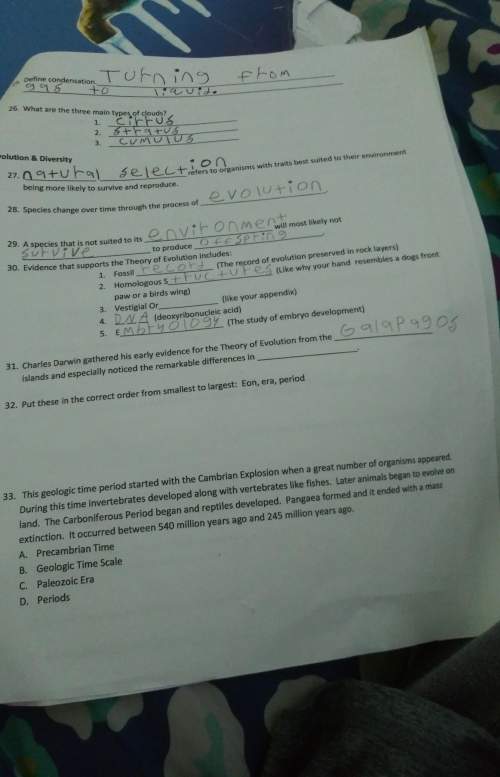
Aparticle's position is given by x = 6.00 - 9.00t + 3t2, in which x is in meters and t is in seconds. (a) what is its velocity at t = 1 s? (b) is it moving in the positive or negative direction of x just then? (c) what is its speed just then? (d) is the speed increasing or decreasing just then? (try answering the next two questions without further calculation.) (e) is there ever an instant when the velocity is zero? if so, give the time t; if not, answer "0". (f) is there a time after t = 3 s when the particle is moving in the negative direction of x? if so, give the time t; if not, answer "0".

Answers: 2
Other questions on the subject: Physics

Physics, 21.06.2019 22:50, Jasten
A23 kg log of wood begins from rest, 300 m up a sluice (a water track used to transport logs, think of it as an inclined plane with negligible friction) inclined at 20° to the horizontal. after it reaches the flat waterway at the bottom it collides elastically with a 100 kg block of wood initially at rest near the base of the incline. (a) how long does it take the 23 kg log to travel down the incline? (b) what is the speed of the 23 kg log at the bottom of the incline? (c) what are the velocities of both blocks of wood after the collision? (d) what is the total kinetic energy before the collision? (e) what is the kinetic energy of the 23 kg log after the collision? (f) what is the kinetic energy of the 100 kg block of wood after the collision? (g) what is the total kinetic energy after the collision? (h) compare the total initial and total final kinetic energies. is this consistent with what you would expect for elastic collisions? explain!
Answers: 1

Physics, 22.06.2019 15:00, koranbutterton
Astudent throws a water balloon with speed v0 from a height h = 1.76 m at an angle θ = 21° above the horizontal toward a target on the ground. the target is located a horizontal distance d = 9.5 m from the student’s feet. assume that the balloon moves without air resistance. use a cartesian coordinate system with the origin at the balloon's initial position. (a) what is the position vector, rtarge t, that originates from the balloon's original position and terminates at the target? put this in terms of h and d, and represent it as a vector using i and j. (b) in terms of the variables in the problem, determine the time, t, after the launch it takes the balloon to reach the target. your answer should not include h. (c) create an expression for the balloon's vertical position as a function of time, y(t), in terms of t, vo, g, and θ. (d) determine the magnitude of the balloon's initial velocity, v0, in meters per second, by eliminating t from the previous two expressions.
Answers: 3

Physics, 22.06.2019 15:30, anonymous1813
What is the increase in density of a medium due to wave travel?
Answers: 2

Physics, 22.06.2019 21:00, brittneys55
What is the efficiency of an engine that does 80 j of work and exhausts 320 j of heat while taking in 400 j of heat ? a. 10% b. 20% c. 80% d. 25%
Answers: 1
Do you know the correct answer?
Aparticle's position is given by x = 6.00 - 9.00t + 3t2, in which x is in meters and t is in seconds...
Questions in other subjects:



Physics, 22.11.2020 20:00

Biology, 22.11.2020 20:00



Mathematics, 22.11.2020 20:00

Biology, 22.11.2020 20:00


Mathematics, 22.11.2020 20:00







